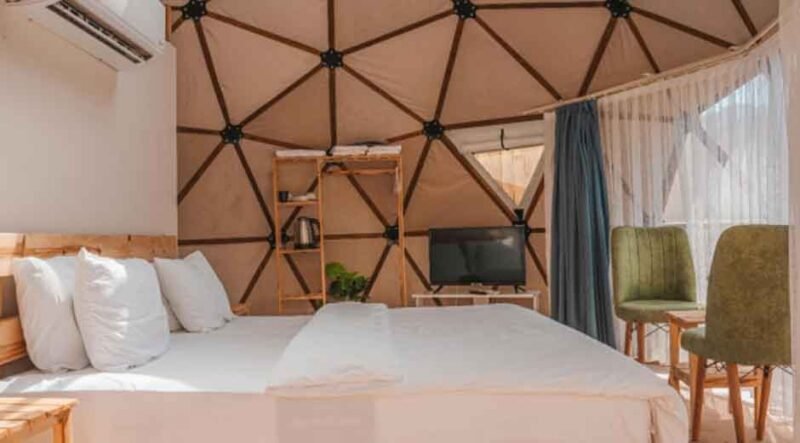
Running the air conditioner for hours on end can quickly add up, especially during heat waves or in regions where summer temperatures stay high for weeks at a time. While it’s important to stay comfortable, it’s also smart to look for ways to cut down on cooling costs without sacrificing that comfort. The good news is, with a few simple steps and smart choices, you can reduce your energy use and save money while keeping your home at a pleasant temperature.
The size of your house, the age of your cooling system, and even small habits, like when you open your windows or use your ceiling fans, can all affect how much energy you use. In places where energy use spikes in the summer, like parts of California, cooling bills can really put a dent in your budget. That’s why many homeowners look for expert guidance on how to make their cooling systems run more efficiently and find ways to lower overall energy use. When you take a closer look at how your home’s systems work together, you can uncover savings you might not have realized were possible.
Tip #1: Work With Experts Who Understand Your Home Systems
One of the most effective steps you can take to lower your cooling costs is to have your system checked by professionals who understand both how air conditioning works and how energy use impacts your bill. Even small issues like an air conditioner that isn’t sized correctly for your space or outdated components can cause your system to work harder and use more electricity than necessary. If you’re curious about how much your AC is really costing you or want guidance on improving efficiency, it can be helpful to consult home cooling & electrical system experts who can assess your setup and suggest ways to lower energy use without sacrificing comfort. Their insight can help you identify smart changes and upgrades that keep your home cool and your bills in check.
Tip #2: Use Your Thermostat to Your Advantage
Your thermostat is one of the easiest tools you have for managing cooling costs. Even a small adjustment can make a big difference. Setting your thermostat just a few degrees higher when you’re out of the house or asleep can reduce how hard your system has to work. If you don’t already have a programmable or smart thermostat, consider getting one. These devices let you set schedules so your home stays comfortable when you need it to be, and saves energy when you don’t. Over time, these small changes add up to meaningful savings.
Tip #3: Stay on Top of Regular Maintenance
Your air conditioning system works best when it’s clean and in good shape. That’s why regular maintenance matters. Simple tasks like changing your air filter every month or two, cleaning vents, and checking for blockages can help your system run smoothly and use less energy. When filters and vents are dirty or blocked, your system has to work harder to cool your home, which means higher energy bills. Scheduling professional tune-ups at least once a year can also catch small issues before they turn into costly repairs. During a tune-up, a technician can check refrigerant levels, inspect electrical connections, and clean coils, small details that help your system last longer and perform more efficiently. Keeping up with maintenance not only saves money but also helps prevent unexpected breakdowns during the hottest days of the year.
Tip #4: Keep the Heat Out
One easy way to help your air conditioner do its job is to block out the heat before it gets inside. During the hottest parts of the day, close your blinds or curtains to keep sunlight from heating your rooms. Blackout curtains or reflective window film can add an extra layer of protection. It’s also a good idea to check for gaps around doors and windows where hot air can sneak in. Sealing these spots helps keep cool air inside, so your system doesn’t have to work overtime.
Tip #5: Use Fans to Improve Airflow
Fans are a simple and affordable way to help circulate air and make your home feel cooler. Ceiling fans, box fans, or even small desk fans can help spread cooled air more evenly through your space. It lets you set your thermostat a little higher while staying comfortable, which can lower your energy use. You might also try positioning fans near windows in the evening to draw in cooler outside air or using them to help move air from room to room. Just remember to turn the fans off when you leave the room. They cool people, not spaces, so running them in empty rooms won’t help lower your bills. Using fans wisely can add up to noticeable savings over the course of a hot summer.
Tip #6: Know When It’s Time to Upgrade
Older air conditioning systems often cost more to run than newer, energy-efficient models. If your system is over 10 or 15 years old, it might be worth talking to a professional about whether an upgrade would pay off in lower energy costs. Newer models are designed to use less energy while keeping your home just as comfortable. If you’re unsure whether it’s time to replace your system, a professional can inspect your setup and give you honest advice about your options. Sometimes, a small upgrade, like replacing an old thermostat or adding zoning controls, can make a noticeable difference without needing a full system replacement.
Keeping your home cool during the summer doesn’t have to mean sky-high energy bills. By making small adjustments, staying on top of maintenance, and seeking guidance from experienced professionals, you can lower your costs while keeping your home comfortable. Every little bit helps, from setting your thermostat wisely to blocking out heat during the day. And when you work with experts who understand how your cooling and electrical systems work together, you can feel confident that you’re doing what’s best for your home and your wallet.
Staying cool should be something you can enjoy without worrying about your next energy bill. With the right steps, you can keep your home comfortable, your system running smoothly, and your energy costs under control all summer long.

